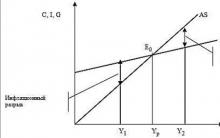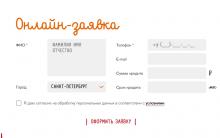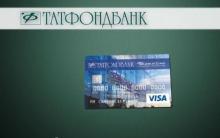Pips is a standardized unit and it displays the smallest amount that a price quote can change.
Pips usually means one ten thousandth US dollar for currency pairsthat are associated with it, which most often refers to the hundredth of one percent or one basis point.
Pips are a very small indicator for changing the value of a currency pair. It can be measured in terms of quotation, or in terms of the value of the main currency.
This fixed size helps protect investors from serious losses. For example, if the pip is 10 basis points, then a change in one pip will lead to a serious fluctuation in the currency value. To forecast quotes of currency pairs, a trader can use, for example, using technical analysis Forex
Some Forex brokers suggest using fractional (fractional) pips to provide an additional numerical rank for determining exchange rates for some currency pairs. The fractional or fractional pip is equal to one tenth of the pip and it is called pipetts.
Pip value determination
The monetary value of each pip depends on three main factors:
- currency pair that is put up for auction;
- trading volume with this currency pair;
- exchange rate on a trade operation.
based on these factors, the fluctuation of each pip can have a significant impact on the value of an open currency position.
For example, suppose a trade in the amount of 300 thousand dollars with the USD / CAD currency pair closed at 1.0568 after receiving 20 pips. And then the profit calculation in US dollars will include the following steps:
- Determining the amount of Canadian dollarswhich are represented by each pip. This calculation is made by multiplying one pip by the total amount of the trading operation:
300,000 x 0.0001 \u003d 30 Canadian dollars per pip. - The second step is to divide the number of Canadian dollars per pip at the closing rate of the trading operation to calculate the number of US dollars in one pip:
30 ÷ 1.0568 \u003d 28.39 US dollars per pip. - To determine the total profit or loss from the transaction in US dollars you need to multiply the number of pips received by the previously determined number of US dollars in one pip:
20 x 28.39 \u003d 567.80 US dollars profit.
Conclusion on the algorithm for calculating the cost of pip
Now, after you have examined in detail the algorithm for calculating the value of pips, as well as determining profit or loss as a result of a trading operation, you may wonder, “Do I have to constantly engage in such calculations?” The answer to this question is no. Almost every Forex broker will do this automatically for you, but personally it will never be superfluous for you to know how they do it.
A point is the value of the smallest possible change in the value of a quote. In other words, the change in points is equal to the change in the last number after the decimal point in the quote. For example, if the EUR / GBP currency pair has changed in value from 0.7155 to 0.7157, they say that it increased by 2 points. Or if the USD / JPY currency pair has changed in price from 119.14 to 119.10, they say that it fell by 4 points.
Sometimes points are called pips (from the English PIP - percentage in point).
Measurement of changes in quotes in points allows you to draw parallels between close assets with different dimensions. For example, a change in the cross rate of a currency pair from 1.9243 to 1.9253 is equivalent to a change in any index associated with it from 5469 to 5479 and amounts to 10 points.
For convenience and speed of calculations, the cost of one point of the asset is calculated, and then, simply by multiplying by the number of points of change, the value of this change is obtained. For example, if the price of one pip EUR / USD is $ 10, then a change in the rate from 1.3451 to 1.3471 will cost 20 points or 20x10 \u003d $ 200 (profit if you have open or loss if you have a short position) .
It happens that the value of a point varies depending on the price of the asset at the current time, in this case the price of the point must be recalculated in accordance with the current price.
What is an item on Forex
Until recently, for all currency pairs in the Forex market, except for pairs with the Japanese yen, the size of one point was 0.0001 (the fourth digit after the decimal point). And for couples with the Japanese yen 0.01 (second digit after the decimal point).
However, at present, a number of brokers have switched to the so-called five-digit quote. Such a quote implies greater accuracy and allows brokers to switch to floating. With a five-digit quote, the size of one point is 0.00001 (the fifth digit after the decimal point), and for couples with the Japanese yen 0.001 (the third digit after the decimal point).
Why are couples with the Japanese yen quoted differently? This is due to the fact that at the end of World War II, the yen was fixed at 350 yen per dollar. And in 1995, this rate was already 79 yen for one dollar. And for all these sixty years, Japan has never held its denomination national currency. Therefore, in order for the value of one point of the Japanese currency to be comparable with one point of the remaining currencies, their cross rate is displayed with an accuracy of 0.01 (in a four-digit quote) or 0.001 (in a five-digit quote).
Calculation of one point in Forex
The cost of one point depends on the size of the position. Let's calculate the cost of an item for minimum size Forex positions at 0.01. Remember that one lot on foreign exchange market Forex is equal to one hundred thousand units of the base currency (that is, for example, for a pair of EUR / USD, one point costs 100,000 euros, and for a pair of GBP / USD one point costs 100,000 British pounds).
If the dollar is the base currency (for example, for pairs USD / CHF or USD / CAD), then the calculation is carried out as follows:
- Suppose, at the moment, the USD / CAD rate is 1.2440;
(0.0001 / current exchange rate) x value 0.01 lot
IN this case one lot costs 100,000 US dollars, and 0.01 lots, respectively, 100000 x 0.01 \u003d 1000USD. We get (0.0001 / 1.2440) x 1000 \u003d $ 0.08.
If the dollar is not the base currency (for example, for EUR / USD or GBP / USD pairs), then we calculate according to the following algorithm:
- Let the current EUR / USD rate be 1.2231;
- We calculate the cost of one item according to the formula:
0.0001 x cost 0.01 lot
In this case, one lot costs 100,000 euros, and 0.01 lots cost 100000 x 0.01 \u003d 1000 Euro. As a result, we have the cost of one point 0.0001 x 1000 \u003d 0.1 dollars (note that although we substituted the value in Euros, the final result is still in dollars).
Above are examples of calculation for a four-digit quote. For a five-digit quote, the size of one point is considered similarly, only in the formulas instead of the value 0.0001 the value 0.00001 is substituted. Or, even simpler, one point in a four-digit quote is equal to ten points in a five-digit quote.
Spread - what is it in Forex trading? To begin with, the spread is a synonym for the concept of “difference” (it is not without reason that some margarines call the spread, referring to their difference from the classic oil). In terms of exchange trading, in particular, a Forex spread, this is the difference between the minimum offer price of an asset and the maximum price at which traders agree to purchase it. However, the terminology itself requires clarification, not to mention the need to clarify the mechanics, that is, how the spread is traded.
Spread: what is it in Forex
Organized financial market It’s called not just because it is attended by specialized traders who artificially maintain its 100% liquidity by continuously maintaining open positions on selected assets. It is also organized, thanks to the presence of a mechanism for submitting and recording applications for transactions, per transaction.
Each buyer wants to buy cheaper, and the seller wants to sell more expensive. At the price level at which their desires converge, a deal is being made. Modern interfaces trading floors illustrate this in the form of a “glass”, where the orders of buyers are indicated below (or to the left), and orders of sellers above (or to the right). In the place of “contact” of these prices, transactions take place.
Of course, prices do not have to “touch” at all. All market participants have their own conditions, restrictions and wishes: someone needs to be sold urgently and at any price, while someone can wait. As a result, there may be some cost difference between the highest price set by any buyer (BID price) and the lowest sale price (ASK price). This is the spread.
It is important to understand that the prices that form the spread are the most relevant on the market - it is for them that the largest number of transactions is concluded.
It is sometimes said that the spread is supposedly the price difference that the broker (providing participants access to the auction) or the auction organizer (that is, the exchange platform itself) “puts it in your pocket”. This is not true! Nobody puts anything anywhere here: the platform charges a percentage of the operation from the participants - it doesn’t matter whether you buy or sell. The broker does the same. The spread to their income has nothing to do with it at all.
So, what is the spread in Forex? Specifically, in the Forex spread depends on the understanding of the level of adequacy of the price of the currency for those who want to sell and buy it. And while the buyer and seller do not agree, there will be no transaction. In fact, it represents the price difference between the maximum offer to buy and the minimum sale price of a currency pair.
Questions of the mechanics of exchange transactions, as a basis for spread trading
There are 2 main ways to conclude transactions in an organized market:
Place a warrant and wait, like a fisherman, for a counterparty to “peck” at it. If you are a buyer, then the seller must “peck”, that is, agree to a deal with you on the terms you have proposed. And vice versa.
"Collect by current." This means that you yourself accept the orders of counterparties, that is, you agree to the terms of the transaction offered to you.
Numerous types of orders: pending, limit, etc. - are just derivatives of these two indicated.
The fuss on the stock exchanges has gone down in history. Now no one is pushing there and making signs with fingers to each other (signs, which, however, have legal consequences), as well as with their back office on the periphery. Bidding went online and orders are accepted there with a simple click of a mouse button.
Accordingly, suppose you decide to buy shares of Q. You either place an order at the price at which you would like to purchase them, or simply “pick up” other people's offers for sale if seller prices are convenient for you (just click on them with the mouse ) Obviously, the maximum number of such clicks falls precisely on the prices that form the spread, that is, on the most relevant.
The spread on Forex (and generally, on any exchange, on any asset) tends to fluctuate. This means that these current prices, which form the spread, often and quickly change, moreover, in both directions.
By the way, the more liquid and voluminous the market is, the smaller the spread and the higher the dynamics of its change. It turns out that the risks associated with the paired transactions of buying and selling an asset within the price spread are minimal (since the asset “walks” constantly on the scale of the spread).
So why not make Forex spread trading (as one of the largest markets in the world) a professional activity? Yes, the price difference, presumably, will be small, but transactions can be concluded literally hundreds of times a day (modern software robots help in this) - this is the source of guaranteed income ... Almost.
How to trade a spread
And now the mechanics. Everything is extremely simple: we buy cheaper and sell more. In an organized market and trading in CFD options, these actions can be performed in any order. The main thing is that the rule is observed - the sale price must be higher than the purchase price.
Spread: what is it in forex trading? A certain price range that “walks” up / down hundreds of times. If you buy a currency at the lowest possible price by “collecting” at current orders and immediately placing a sell order at the current price that is as close as possible to the purchase price, then the probability is high that the price will move up and your sell order will be executed profitably for you.
Why is it necessary to choose a spread price, and not a big one, for example? In order to make the transaction more likely to close: after all, the less movement you expect, the higher the likelihood of this event occurring (this is obvious).
It is worth repeating: trading on the spread is not based on the maximum price movement of the asset, but based on the largest number of transactions. In other words, we make money not on price growth, but on the volume of transactions ... Well, and on price growth, if possible, too.
Conclusion
Having examined the spread issue, what is it in forex, we can draw some conclusions. Trading on the spread differs from the usual (calmer) exchange trading in great dynamism - here a monstrous amount of “cheap” transactions is concluded.
"Penny" is dictated by the desire to reduce the likelihood of a price drift off-balance. But no strategy (including this one) can guarantee this. So, a trader trading on a spread can change hands from a “predatory scalper” to a “strategic investor” at any time. Although, no, perhaps that second.
Investment Secrets - keep abreast of investments!
It seemed such a simple question "What is a forex item?" Sometimes it causes a lot of misunderstandings and additional questions, because for each currency pair there is an own value for the item, as well as other factors affect its size.
Point Forex - sometimes it is also called pip, this is the last digit in the quote of the currency pair, which characterizes the minimum possible change exchange rate, in relation to currencies in a currency pair.
If you pay attention to forex quotes, you will notice that each of the tools has its own number of decimal places, but this factor has absolutely no value, one point will still be equal to the last digit in the record.
For example.
AUDCAD - 1.0596 price increase by 1 point in this case will lead to a quote of 1.0597
CADJPY - 92.47 in this case, a change to will already affect the second digit after the decimal point.
In addition, the quote of a currency pair in some cases may have three or five decimal places.
The cost of a forex item.
When trading, it should be borne in mind that although all transactions have standard volumes, which are measured in lots, the cost of one forex point for each currency pair will still be different.
Therefore, when calculating, it is imperative to consider which of the currencies form this currency pair, and if the base currency is always used to measure the volume of trade, then the cost of one point will be calculated depending on the quoted one. The more significant this currency is, the greater the value of our indicator.
In addition, we should not forget about the number of characters in the quote, this factor also directly affects the calculations.
The cost of a point also directly depends on the volumes performed, the larger the volume of the transaction, the greater this indicator.
The simplest example is the calculation for the EURUSD pair, for convenience we take the volume of operations in 1 lot or 100,000 units of the base currency.
0.0001x100,000 \u003d 10 US dollars
Change currency pair to USDJPY
0.01x100,000 \u003d 1000 Japanese yen or 10.55 US dollars
Let's try to calculate expensive currencies EURGBP
0.0001x100,000 \u003d 10 pounds or about 15.15 US dollars.
As you can see, the value of a forex point is affected by several indicators - the quoted currency, the number of characters in the quote and the number of
A point (pips, point) is the smallest possible change in the price of the exchange rate or the smallest possible part of the exchange rate. If the EURUSD pair changes from 1.2230 to 1.2231, this means that the pair has changed the value by 1 point. To know that such a clause is necessary in order to be able to assess the possible size of profit and loss in each transaction. To calculate profit on a Forex transaction, you just need to calculate the number of points earned and multiply it by the value of one point for this currency. Losses are calculated in exactly the same way.
It is immediately necessary to make an important reservation: quotes are 4-digit and 5-digit. Four-digit quotes - classic or traditional, in which there are 4 decimal places after the point. Recently, some brokers can provide five-digit quotes, in which there are 5 characters after the point. Such quotation is considered more accurate and, as a rule, is used on floating trading accounts.
An example of a combined indication of points in 5-digit quotes.
The value of the course with 5 signs after the point is divided into a larger number of points compared to 4 signs, therefore, 1 point per Forex traversed by the price with a 4-digit quote will be 10 points traversed by the price in 5-digit quotes.
Thus, when the exchange rate of the GBPUSD currency pair with a 5-digit quote from 1.44500 to 1.44510 tells us that the Forex price has passed 10 points, if the value has changed from 1.44500 to 1.44580, the price has passed 80 points. In 4-digit quotes, these changes are 1 and 8 points, respectively. These features must be taken into account when using take profit, trailing stops, as well as in the work of trading robots or other scripts, the logic of which will need to be changed when transferring to accounts with a different type of quotation.
In English, the item is also called “point” or “pip”. 100 points in trading jargon is called the word “figure”, so when they say that someone took one and a half figures, this means that the profit on the transaction amounted to 150 points.
Just as each currency has its own exchange rate, for a point of this currency you must be able to calculate the cost.
For currency instruments in which the dollar is the base currency, the calculation will be carried out as follows.
1.5250 - exchange rate
0.0001 divided by course \u003d value of point.
0.0001/1.5250=0.0000655
Multiply by the position volume (minimum lot 0.1):
0.0000655 (value of a point) * 10 000 (position volume) \u003d $ 0.655
In the event that the dollar is not the base currency of the pair, and we need to get the value in dollars, we need to add one more step.
1.2200 - exchange rate
0.0001 divided by course \u003d value of a point.
0.0001 / 1.2200 \u003d EUR 0.00008196
Now let's move on to the dollars:
EUR * exchange rate
0.00008196*1.2200=0.00009999
Rounding, we get 0.0001.
Multiply by the position volume (minimum lot 0.1):
0.0001 (value of a point) * 10 000 (position volume) \u003d $ 1
It should be noted that the USDJPY currency pair has a slightly different quotation form. After World War II, the Japanese currency was fixed at 350 yen per one american dollar. In 1995, one dollar was already worth only 79 yen. Over the past 60 years, Japan has never held a denomination of the national currency. In order for the value of one point of the yen to be comparable with the value of one point of other currencies, it is measured with an accuracy of 0.01. To make it easier to navigate with the point size for different currencies, it should be remembered that for most currency pairs, one point is 0.0001 (in a four-digit record) and only for the yen and its cross rates it is 0.01 in a 4-digit record and 0.001 in 5 digit.











Real estate investment
Available online deposits in VTB
To whom and on what conditions they give a mortgage in a savings bank
Rosbank entrance for legal entities
What to specify for credit purposes